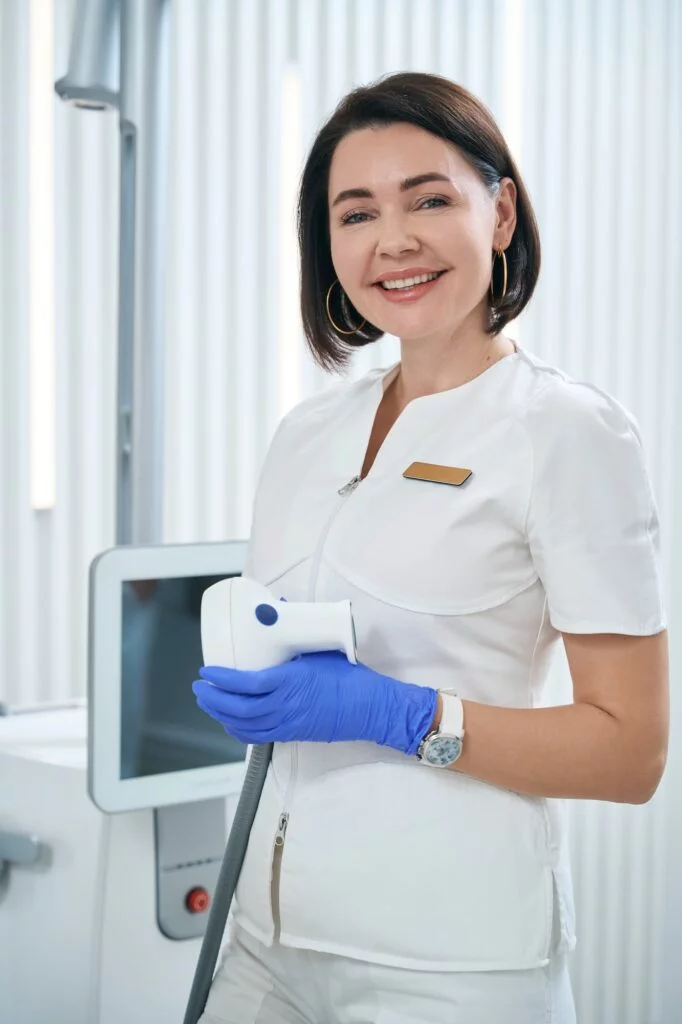A colonoscopy procedure can be used for diagnostic and treatment purposes. A colonoscopy can allow your doctor to see inside the colon to diagnose problems and treat them right away. Many times, colon cancer causes no symptoms until it progresses significantly. As a result, the survival rate is less than many other forms of cancer.
All adults should get routine colonoscopies after the age of 50 to ensure health problems can be diagnosed and treated right away. Issues that don’t cause symptoms can be detected early on and treated easily using colonoscopy.
A colonoscopy is safe, but it helps to know its risks, so you can make an informed decision.
What is a Colonoscopy Procedure?
During a colonoscopy procedure, your doctor will use a colonoscope inserted into your rectum to access and view your colon. Your doctor will lubricate the colonoscope and likely have you unconscious to minimize friction and discomfort. It is flexible enough to navigate your colon easily. The device also pumps a controlled amount of air to inflate your colon slightly. That way, your doctor can see better.
Perforations
In rare cases, the procedure can cause a perforation. Friction can cause parts of the instrument to damage or penetrate your intestinal walls. Improper air inflation may lead to perforation.
Instruments used to obtain biopsy samples or remove colon polyps may dig too deeply into your tissues. This can also lead to perforations.
Perforations are dangerous, as they allow bacteria to exit your large intestine and cause severe infection. Fortunately, perforations can be spotted and corrected during a colonoscopy procedure. Doctors can repair ruptures through endoscopic clipping or band ligation.
It is unlikely that a perforation will occur during a colonoscopy. Working with well-trained medical professionals using state-of-the-art equipment further reduces this risk.
Bleeding
Excessive bleeding is another possible complication of a colonoscopy procedure. It rarely occurs during diagnostic colonoscopies. However, it can occur as a consequence of a biopsy. For colonoscopies involving polyp removal, the risk of bleeding is higher.
Bleeding may not be apparent immediately after a colonoscopy procedure. While many cases occur within 24 hours, it is possible for bleeding to start one day to two weeks after.
The risk of bleeding depends on factors such as patient age and the use of anticoagulants. Patients with blood clotting disorders and vascular diseases may also be more prone to bleeding complications. More blood might escape from the site if the polyp or biopsy area contains a rich blood vessel network.
You can help minimize your risk of bleeding by coordinating with your doctor. It’s vital to let your doctor know if you have a clotting disorder or are taking anticoagulants. Sharing your complete medical history with your doctor can help them account for the heightened risk.
Post-Polypectomy Syndrome (PPS)
PPS is a rare complication of colonoscopy procedures with polyp removal. Here, a patient experiences abdominal pain and exhibits signs of an infection. You might experience a fever or an elevated white blood cell count. There may also be inflammation of your peritoneum — the internal lining of your abdominal cavity.
Fortunately, you’ll likely only need conservative treatment to address PPS. If you get PPS, your doctor will likely prescribe antibiotics and fluids to help your body fight infection.
Adverse Reactions
A colonoscopy procedure often involves the use of sedation. Using it helps you remain calm and minimizes movement that might interfere with the procedure. However, there is a slight risk you may experience an adverse reaction to the sedative, although this is rare. This adverse reaction could cause issues with breathing or heart function.
You can manage and reduce these risks by coordinating with your doctor. Sharing your medical history can help your doctor select sedatives less likely to cause trouble.
Consult your doctor regarding what substances you will receive during the colonoscopy. You might need to stop taking certain medications or avoid specific foods beforehand. Following these instructions closely should significantly reduce your risk of adverse reactions.
Colonoscopy Procedure in California
The main risks of colonoscopy involve colon perforation, bleeding, PPS, and adverse reactions. While these complications are rare, it is still important to discuss them with your doctor. By working with an experienced professional, you can map out potential hazards and prepare for them adequately.
At Genensis Healthcare Partners, we provide patients with the highest quality healthcare for gastrointestinal issues. We combine innovative techniques with expert medical professionals to give you effective treatment. Learn more by calling the inSite location nearest you or by setting up an appointment through our online form.
We look forward to helping you with your GI issues!



